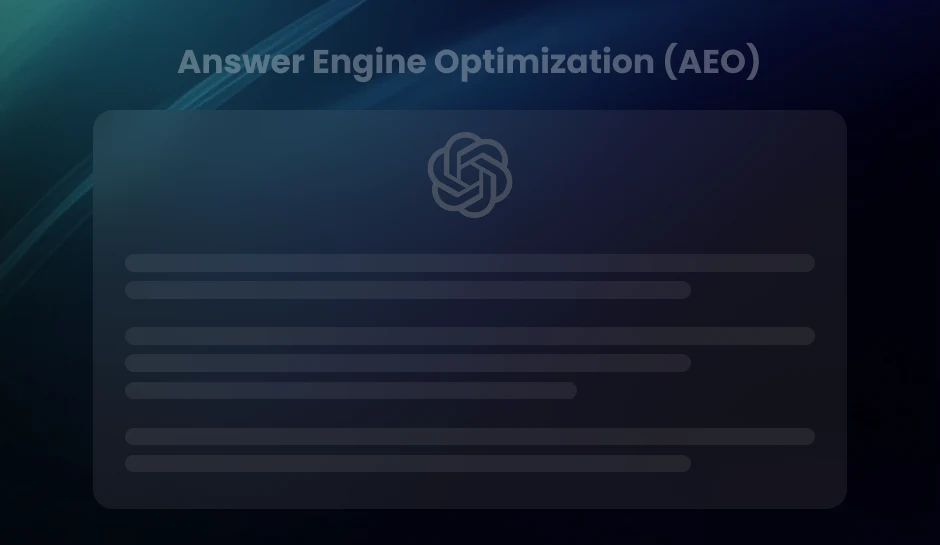
Why Businesses Are Prioritizing Account-Based Marketing Benefits in 2025
Account-Based Marketing is transforming B2B growth in 2025. Focus your efforts on high-value accounts with personalized campaigns, improve lead quality, align sales and marketing, and boost budget efficiency. Discover the 5 game-changing Account-Based Marketing benefits that are transforming businesses Discover the 5 game-changing Account-Based Marketing benefits that are transforming businesses in 2025 and beyond.
Do you know what is no longer working in 2025? Mass marketing.
If you are still relying on broad campaigns to bring in leads, you are probably seeing more noise than results. As a marketer, you need to ask yourself: Why are so many businesses shifting to Account-Based Marketing? What makes Account-Based Marketing so powerful that companies cannot afford to ignore them anymore?
The truth is simple. ABM targets exactly the right accounts with highly personalized campaigns that actually convert. If you want better ROI, tighter sales and marketing alignment, and faster growth, this is the strategy to master.
“ABM is about quality over quantity and focusing on engaging the most profitable accounts. As you can imagine, this type of hyper-targeted marketing brings great results, with a more personalized customer experience leading to much higher quality leads. ITSMA (Information Technology Services Marketing Association) research found that 84% of businesses that use ABM find their ROI is higher than for any other type of marketing.” — Salesforce
Keep reading to find out why businesses are prioritizing account-based marketing benefits more than ever in 2025, and why you should too.
What Is ABM and Why It Matters in 2025
Account-Based Marketing is different from traditional marketing because it does not try to reach everyone with the same message. Instead, it focuses on a small group of important accounts and sends personalized campaigns that speak directly to their needs.
Traditional marketing is usually broad. You send emails to large lists, run general ads, and hope some leads come in. It is more about quantity than quality. ABM flips that approach. It is about quality over quantity, with marketing and sales teams working closely to target the right accounts with the right message.
“Account-based marketing (ABM) is an approach that leverages customized buying experiences for customer acquisition, relationship-building, and business growth. This strategy deploys personalized campaigns to engage each account based on its unique needs and characteristics. As opposed to a one-size-fits-all approach, ABM is about honing in on those accounts that are most likely to convert and offer significant value to your business.” — MARTECH
In 2025, this matters more than ever. Buyers expect marketing that understands their challenges and speaks directly to them. Generic messages get ignored. ABM helps you cut through the noise by focusing your time and resources where they will have the biggest impact. This means better engagement, faster sales, and a stronger return on your marketing investment.
The 5 Biggest Account-Based Marketing Benefits Businesses Are Prioritizing
1. Higher ROI and More Predictable Revenue
Many companies know Account-Based Marketing (ABM) as a targeted approach for reaching key accounts, but few fully understand how it fundamentally transforms marketing efficiency and revenue predictability. Beyond the obvious, ABM unlocks advantages that most organizations underestimate, driving higher ROI and creating more predictable revenue in ways that traditional marketing simply can’t match.
How ABM Creates More Predictable Revenue
One of the biggest challenges companies face is forecasting revenue accurately. ABM changes that by:
- Targeting Known Quantities: Instead of chasing leads from a wide pool, ABM centers efforts on a clear list of accounts with real potential and buying intent signals.
- Tracking Engagement Closely: With every touchpoint personalized and monitored, teams can see where accounts are in their buyer’s journey and forecast when deals are likely to close.
- Shortening Sales Cycles: Focused engagement accelerates decision-making, leading to steadier and more reliable revenue flow.
This predictability reduces surprises at quarter-end and allows leadership to plan confidently for growth.
2. Sales and Marketing Alignment
Remember, disconnected teams do not just slow progress, they cost pipeline and profit. Account-Based Marketing provides a system that forces collaboration and rewards it with measurable results.
When sales and marketing align around account strategy, outreach becomes smarter, messaging stays consistent, and every stage of the buyer journey is supported in real time.
Aligning sales and marketing through ABM eliminates wasted efforts and reduces friction. It creates a single source of truth where both teams understand account status and next steps. This leads to faster pipeline progression and higher conversion rates.
Pro Tip- Create a shared dashboard to monitor account engagement and progress. This transparency helps both teams stay informed and adapt quickly to changing buyer needs.
3. Improved Lead Quality and Conversion Rates
When it comes to leads, more does not always mean better. Account-Based Marketing shifts the focus from chasing volume to nurturing value, and that shift changes everything.
Volume to Value
Traditional marketing campaigns often flood pipelines with unqualified leads, forcing sales teams to dig through the noise. ABM flips that model by prioritizing a select group of accounts with the highest likelihood of converting.
Instead of targeting personas, ABM targets companies, specific accounts that align with your ideal customer profile. That means fewer wasted touchpoints and stronger momentum through the funnel.
What ABM Does Differently?
What sets ABM apart is how it raises the bar for lead quality from day one. It allows your team to:
- Align outreach with real business intent, not assumptions.
- Engage multiple stakeholders within one account for better coverage.
- Track meaningful engagement signals not vanity metrics.
The result is not just more leads. It is better-fit leads that convert faster and stick longer.
Why Conversion Rates Climb?
By the time a lead enters your pipeline through an ABM campaign, they have already interacted with content designed around their specific needs. They are not strangers, they are informed, interested, and prepared to have a conversation that matters.
This makes your conversion rates less of a gamble and more of a strategy.
4. Personalized Customer Experiences
“Personalized customer experience (CX) has always been something the most successful businesses strive for, and since COVID-19, it’s even more important. ABM offers just that, increasing both customer loyalty and marketing ROI. It means your sales and marketing teams can focus on the most profitable accounts, and lets you engage those accounts more quickly and successfully than a generic marketing campaign ever would. Internally, it keeps different departments aligned to the same overall goals.” — Salesforce
Personalization in ABM refers to tailoring messaging, content, offers, and engagement tactics based on the specific needs, interests, and behaviors of each individual account or buyer persona.
Why Personalization Matters in ABM
- Builds Stronger Relationships: Personalization demonstrates a deep understanding of the client’s business, increasing trust and relevance.
- Boosts Engagement:> Tailored content and messaging resonate better, leading to higher engagement rates and pipeline acceleration.
- Increases ROI: ABM with personalization yields better returns by focusing on key decision-makers and their unique pain points.
- Shortens the Sales Cycle: When decision-makers get targeted, relevant information, they are more likely to move faster through the funnel.
Example Scenario
- Target Account: IT Services Company
- Buyer Persona: VP of Digital Transformation
Without Personalization
- Email: “Discover our digital solutions for your business.”
- Content: Generic whitepaper on digital trends.
With Personalization
- Email: “Hi [Name], see how your competitors in IT services reduced onboarding time by 40%.”
- Content: Case study on a similar company’s transformation using your product + Custom video featuring branding and challenges relevant to the target account.
- LinkedIn Ad: “Digital Transformation for IT Leaders: Tailored for your industry.”
- Result: 3x higher click-through rate and a booked demo within 5 days.
5. Better Resource Focus and Budget Efficiency
ABM works because it helps you spend your time and money smarter, not harder. Instead of trying to reach every single lead out there, you zoom in on the accounts that really matter. This means your marketing efforts are focused, your budget is used more efficiently, and your team isn’t stretched thin chasing unlikely prospects.
The key is picking the right accounts the ones that fit your product and have a real chance of buying. Once you’ve got that list, you create personalized campaigns that speak directly to those accounts’ needs and challenges.
Why Better Resource Focus Is Critical
Even with a narrowed account list, how you use your team’s time, talent, and tools can make or break your ABM strategy. Resource focus means aligning internal efforts content creation, sales outreach, marketing ops toward the highest-priority accounts. Instead of spreading your team thin across too many tasks or initiatives, you go deeper on what really moves the needle.
This lets your team:
- Customize content and outreach with relevance, not generic messaging.
- Allocate time effectively across departments (sales, marketing, success).
- Avoid burnout from multitasking across unqualified leads.
In short, focused teams make smarter moves and that shows in your pipeline.
Challenges That May Get in the Way
Of course, staying focused is easier said than done. Common roadblocks include:
- Too many “priority” accounts, creating chaos instead of clarity.
- Internal pressure to “do more”, even when it’s not strategic.
- Inconsistent execution, where teams drop off after initial engagement.
- Lack of visibility into what resources are going where, and why.
These issues can lead to wasted effort, missed opportunities, and a scattered ABM approach.
How to Overcome These Challenges
- Define strict selection criteria using intent signals, industry fit, deal size, and engagement history.
- Limit your active account pool fewer accounts, deeper personalization.
- Use resource tracking tools to monitor time, content use, and campaign progress.
- Conduct regular audits to identify where your resources are most (and least) effective.
Pro Tip- In economic slowdowns, double down on existing relationships. When new deals slow, nurturing current customers and warm leads with high-value, low-pressure content can preserve pipeline and strengthen brand trust positioning you for a faster rebound when conditions improve.
Key Takeaways
- Account-Based Marketing (ABM) delivers better ROI by focusing on high-value accounts through personalized, targeted campaigns.
- ABM enhances lead quality and conversion rates by prioritizing relevance over volume.
- Focusing resources on fewer, more strategic accounts leads to smarter budget use and sustainable growth.
- Businesses that invest in ABM today are better positioned to navigate future challenges and outpace competitors.
Conclusion: The Future of Growth Belongs to the Focused
In a world where marketing noise is only getting louder, ABM cuts through the clutter with clarity, precision, and purpose. By aligning your teams, sharpening your focus, and engaging only the accounts that matter, you do not just drive revenue, you build momentum that lasts.
As buyer journeys grow more complex and competition gets fiercer, companies that embrace ABM now will be the ones outpacing their market tomorrow. The opportunity is not just in reaching the right prospects, it is in building meaningful relationships that convert, retain, and expand.
So, what is your next move?
If you are ready to move beyond tactics and build a strategy that delivers smarter growth, we are here to help.
Want to score big for your business through ABM?
Start your ABM transformation with DiGGrowth. Email us at info@diggrowth.com to learn more and get started right away.
At DiGGrowth, we work with B2B teams to build and optimise ABM programs tailored to your industry, buyer journey, and revenue goals. Let us show you what a high-impact ABM approach looks like, and how it can gain more value from your marketing.
Ready to get started?
Increase your marketing ROI by 30% with custom dashboards & reports that present a clear picture of marketing effectiveness
Start Free Trial
Experience Premium Marketing Analytics At Budget-Friendly Pricing.

Learn how you can accurately measure return on marketing investment.
Additional Resources
Don’t Let AI Break Your Brand: What Every CMO Should Know
AI isn’t just another marketing tool. It’s changing...
Read full post postFrom Demos to Deployment: Why MCP Is the Foundation of Agentic AI
A quiet revolution is unfolding in AI. And...
Read full post postAnswer Engine Optimization (AEO): The New Frontier of SEO in 2025
As digital experiences continue to evolve, so does...
Read full post postFAQ's
ABM results vary but generally take 3 to 6 months to show meaningful improvements in engagement and pipeline quality. Full ROI benefits often require consistent, ongoing personalization and alignment over multiple sales cycles.
ABM is effective for businesses of all sizes. While enterprises have larger account lists, smaller firms benefit by focusing on fewer high-value targets, enabling more personalized outreach and efficient resource allocation.
Critical tools include CRM systems to manage accounts, marketing automation for campaign delivery, intent data platforms for identifying buying signals, and analytics to measure account-level engagement and refine strategy.
ABM strengthens customer retention by delivering highly relevant content and personalized engagement tailored to each account’s ongoing needs. This continuous value creation builds trust and loyalty, encouraging repeat business and long-term partnerships.
 Rahul Sachdeva
Rahul Sachdeva  Arpit Srivastava
Arpit Srivastava 

